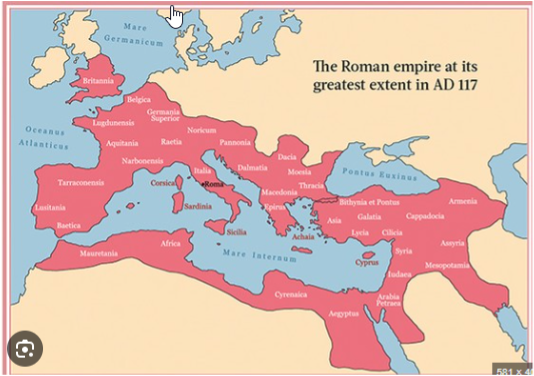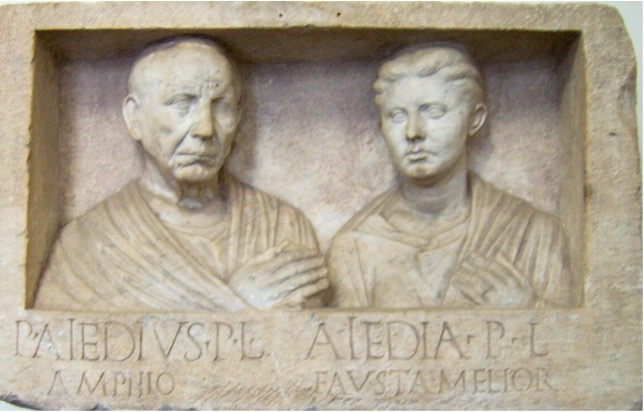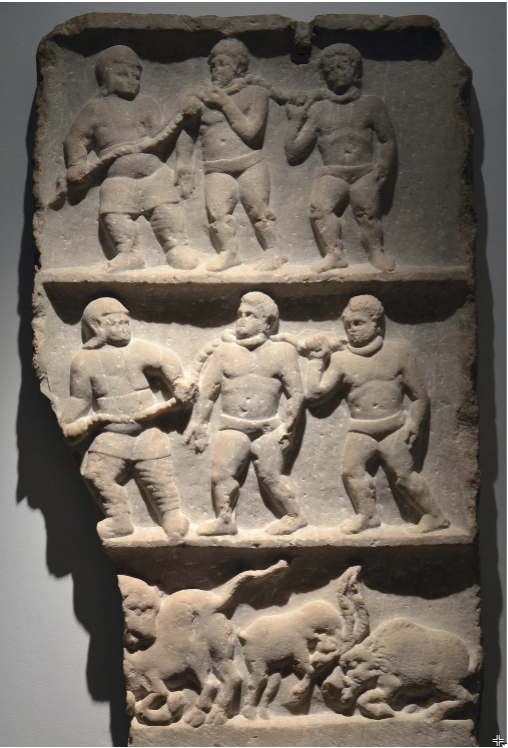A Talk given by Dr Peter Jones on 9th July 2025
We were very pleased to welcome Dr Jones on a return visit to the Society this month. His lecture challenged a common present day view of slavery in which slaves are regarded as inferior and of little value. Dr Jones took us back in time and place and gave us an informative and fascinating insight into what life was like for the Romans and their slaves around the second and third century CE. This was a time when land ownership in the expanding Roman Empire reflected wealth and power and ownership of slaves an equal measure of status.

Slavery played a significant role in Roman Society. At its peak slaves represented up to 20% of the population with some Masters owning many hundreds of slaves. Slaves were acquired in many ways. Vast numbers of prisoners of war or the bounty of pirates were bought and sold, with due taxation, in the markets. They may have been abandoned or put on the market by parents. They could be born into slavery. In some cases individuals would opt to become slaves and we were to understand why this might have been a good option.
Slaves were subject to the laws of ownership and were not entitled to marriage although they did form ‘common law’ relationships. The life of a slave varied from those placed in dangerous and harsh conditions to those who were regarded as an investment and highly valued by their owners despite the expense of owning a slave, especially those who came with artisan and academic skills able to carry out many roles in society indistinguishable from others. Many of these had been captured from other cultures.
Brutal treatment of slaves was regarded as obscene and could result in a court case. Slaves were used as gladiators – inevitably with a limited life expectancy. There were Revolts and rebellious activity and attempts to escape which resulted in being tagged and dealt with harsh punishments. The Public Treasury commissioned hundreds of slaves to work on civic projects e.g. in the mines, aqueduct maintenance and fire prevention.
As the opportunities and importance of trade increased slaves with business skills were used for trading as this was not seen as an appropriate occupation for the elite. This could lead to a partnership benefitting both owner and slave and in some cases enabling slaves to acquire vast personal wealth. Some chose to gain freedom with citizen status, albeit with certain restrictions although children of these Freedmen were accepted as full Roman citizens. Many former slaves continued to work as Freedman but continued in partnership with their former Master bringing financial advantages to both and this could result in the Freedmen repeating the pattern of buying land and slaves as a reflection of their acquired wealth.
The Roman Jurists’ view that ‘Slavery is a human invention, not found in nature’ is still relevant. However, despite the abolition and opposition of slavery in more recent times, today more than half the countries in the world do not regard ownership of slaves as a criminal activity. However, sadly, there are no opportunities for modern slaves to become millionaires.
Sandra Y Gann


